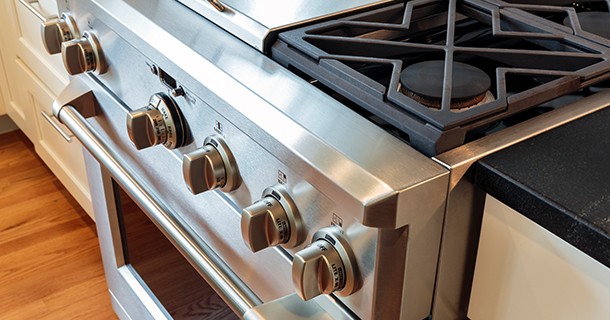For Immediate Assistance: Call our 24-hour Emergency Number 866.643.4170
Smell Gas?
LOOK for blowing dirt, discolored vegetation or continued bubbling in standing water.
LISTEN for a hissing or roaring noise near a natural gas appliance or line
SMELL for the distinctive, rotten-egg odor associated with natural gas. Natural gas is colorless and odorless, so we add a chemical odorant called mercaptan for easy detection. This odorant has a distinctive “rotten egg” type odor. You should act any time you detect even a small amount of this odor in the air.
LEAVE the area immediately and move a safe distance away from the potential leak, while avoiding any action that may cause sparks. Do not try to identify the source or stop the leak yourself.
AVOID using any sources of ignition, such as cell phones, cigarettes, matches, flashlights, electronic devices, motorized vehicles, light switches or landlines, as natural gas can ignite from a spark or open flame, possibly causing a fire or explosion. Natural gas is non-toxic, lighter than air and displaces oxygen. In severe cases, if not used properly, natural gas can also lead to asphyxiation.
CALL Chattanooga Gas at 866.643.4170 or 911 once you are out of the area of the suspected leak and in a safe place. Stay away until Chattanooga Gas or emergency personnel indicate it is safe to return.
Note: Always leave if you suspect a leak. Be aware that some people may not be able to detect the odorant because they have a diminished sense of smell, known as olfactory fatigue, or because the odor is masked by other odors in the area. Certain conditions may cause the odorant to diminish so that it is not detectable.
Carbon Monoxide: Signs, Symptoms and Safety
Carbon monoxide is an invisible, odorless gas that can cause illness and even death when not properly vented by your furnace or appliances. Carbon monoxide comes from the incomplete combustion of common fuels such as heating oil, gasoline, coal, wood, charcoal, kerosene, propane and natural gas. When properly operated and maintained, natural gas heating equipment and appliances are safe and efficient. If not properly operated and vented, carbon monoxide could build up in your living space creating a dangerous situation.
Carbon Monoxide Detectors
Smoke and carbon monoxide detectors should be tested frequently and replaced every 10 years. There are many smoke alarms and carbon monoxide detectors on the market. Regardless of brand, the detector you purchase should meet current UL standards and must be installed and operated according to the manufacturer’s instructions.
Every dwelling should be equipped with at least one approved carbon monoxide alarm, in operating condition, within 15 feet of every sleeping room. This alarm may be battery operated, plug-in with battery back-up or wired into the home's AC power with a secondary battery back-up. Approved alarms bear the label of a nationally recognized testing laboratory and comply with the most recent standards of the Underwriters Laboratories or the Canadian Standard Association.
Improper Venting Risks
Improper venting may be caused by a number of problems - some of which may not be easily seen - making it important to have your equipment checked and serviced regularly.
- Chimneys or vents blocked by leaves, bird nests, debris or heating residue
- Malfunctioning or wrongly installed equipment
- Heating equipment improperly enclosed by paneling or other structures
- Improperly vented equipment
Signs and Symptoms of Carbon Monoxide
- Stuffy or stale air
- Very high humidity
- Fallen soot from your chimney or draft hood
- A hot draft coming from your draft hood
If carbon monoxide is present, you may experience carbon monoxide poisoning. While carbon monoxide poisoning is rare, be aware of the following symptoms. If symptoms are suspected, quickly exit the house to fresh air - taking all people and pets with you - and call for help. Do not reenter the home until it has been deemed safe to do so.
- Headaches
- Dizziness and weakness
- Nausea and vomiting
- Stinging eyes
- Sleepiness
- Heart flutters
Carbon Monoxide Safety Tips
- Install a carbon monoxide detector.
- Have a HVAC technician check your heating equipment annually.
- Keep the area surrounding your gas appliances clear from clutter or trash.
Carbon monoxide detectors may be helpful in your home or business. But remember, a carbon monoxide detector should never be substituted for using equipment safely—which includes having your heating and cooking appliances inspected yearly by a trained professional. Find one in your area.


